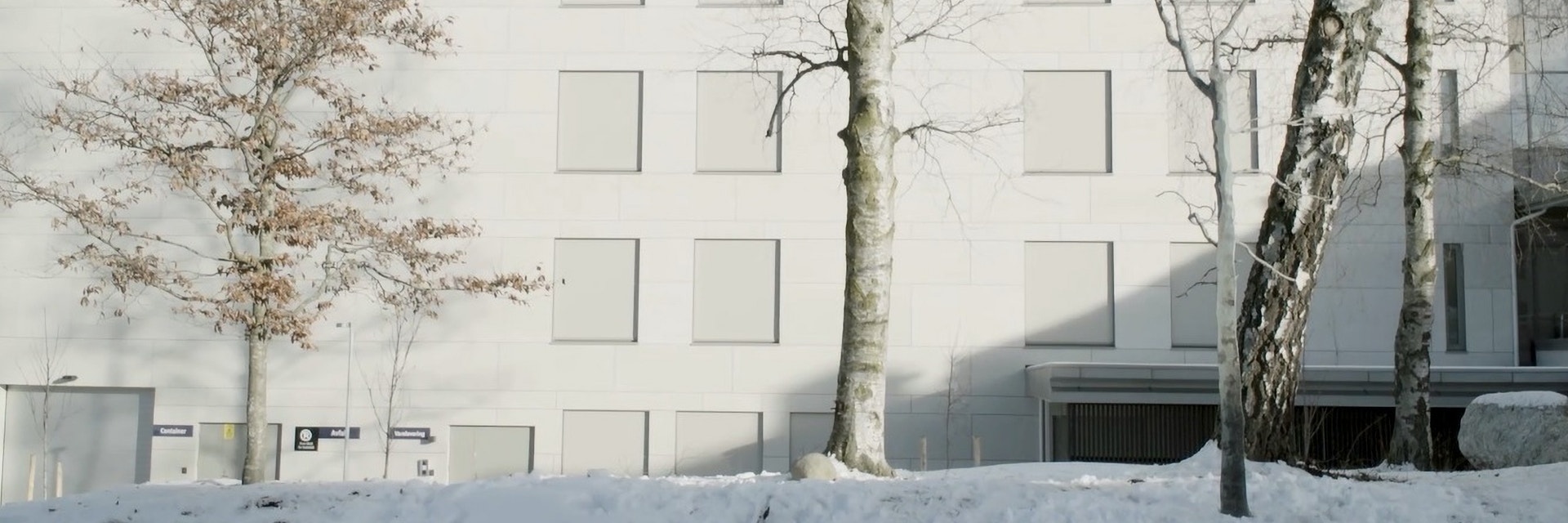CUSTOMER STORY
Between Memory and Reality: Artists Use TetraShell to Create Bronze Tree Sculpture
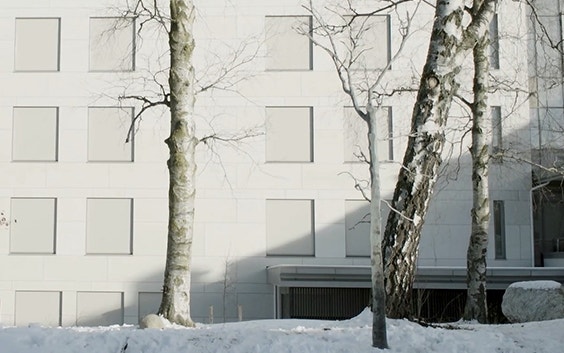
Artist duo L+S was commissioned to create a piece of art for Ullerntunet, a nursing home in Oslo, Norway. Their concept included installing a two-part sculpture on the grounds of the center, made up of a four-meter-high tree and its replica in bronze. Here is how the artists realized their vision based on a 3D scan of the original tree, as well as using 3D Printing and TetraShell investment casting to create the sculpture.
A tale of two trees
Ullerntunet has undergone an extensive construction and renovation process, which has made it Norway's most energy-efficient and environmentally friendly nursing home today. It is both a residential and treatment center for patients with dementia, and Lutz-Rainer Müller and Stian Ådlandsvik, the German and Norwegian artists behind L+S, consciously chose a design that would embody the center’s purpose.
They created a bronze sculpture of a tree, but cut it in half, giving it a feeling of incompleteness like a dream or a memory. As seen from the entrance of the home, the real tree and its bronze replica are aligned so that the living tree is visible behind the bronze sculpture. From this perspective, the viewer’s eye sees the similarities — and over time, differences —as the living tree continues to grow and transform while the bronze tree remains static. It plays with the idea of memory again – our memories remain static and frozen in time, contrasted by growth and ongoing life.


Bringing the sculpture to life with TetraShell technology
But how did L+S bring their concept to life? After creating a digital 3D model of the live tree, the real challenge was to cast the sculpture in bronze in a cost-effective way. Traditional lost-wax casting requires the creation of a silicone master mold, followed by a wax copy which is dipped in ceramic to create the final mold which is used to cast the metal object. This is a time-consuming and expensive process, so L+S compared different production alternatives. They chose to use 3D Printing instead of investing in tools they would only use once and approached Materialise for help.
To help familiarize Thomas Sijen, owner of the Sijen Art Studio foundry, with the TetraShell process, we started by printing a small part of the trunk which Thomas could use for casting. “We had a test part and the results were really good,” said Thomas.
“By using TetraShell you can skip a few parts of your normal process because you have a product that is printed instead of having a product that you would do the traditional way by making a mold and wax model, so that saves a lot of time and money.”
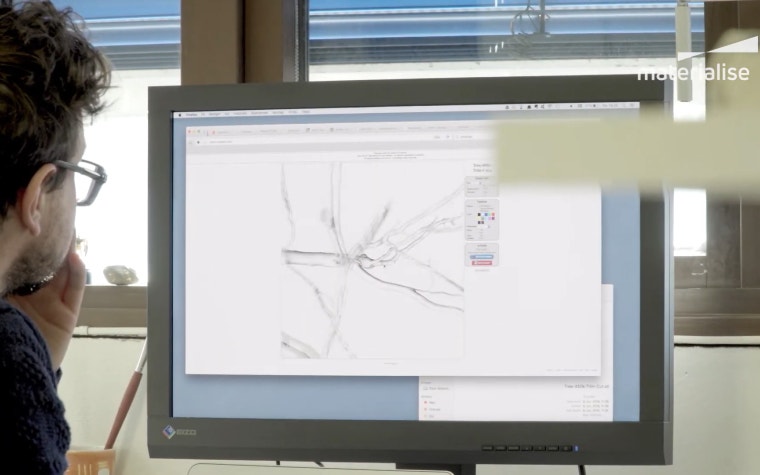

With a successful test run behind us, our engineers back at Materialise got started. First, they hollowed the digital tree model using TetraShell, a software solution by DSM where the model is printed in Stereolithography with a thin outer layer and a hollow interior supported by a tetrahedron structure. As the copy of an actual tree, the model was more than 4 meters high — and the file size was correspondingly huge. But luckily the Materialise Build Processor came to the rescue by slicing the gigantic file into manageable portions for our 3D printers.
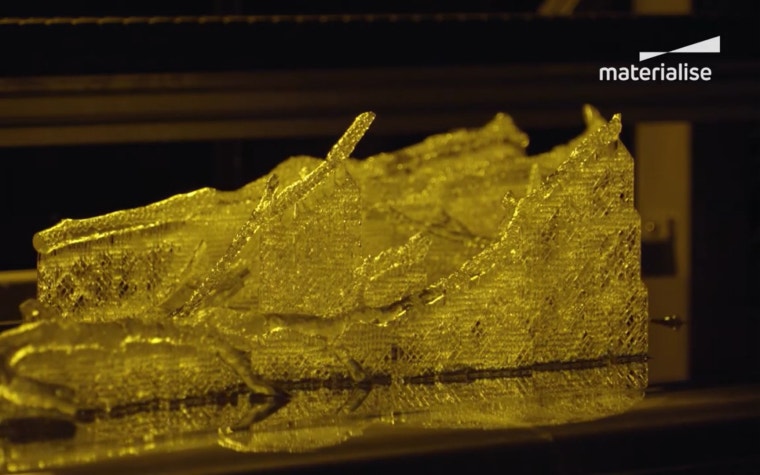

The master model was then printed on our patented Mammoth Stereolithography machines, where the larger build platform capacity was perfect for printing parts nearly 2m long! After finishing the tree model manually to remove any risk of surface deformities, we sent it to the foundry. There, a plaster mold was created by casting composite materials around the 3D-printed parts. Molten bronze was then poured into the plaster shell, cooled down, and the shell was broken open to reveal the finished bronze sculpture.
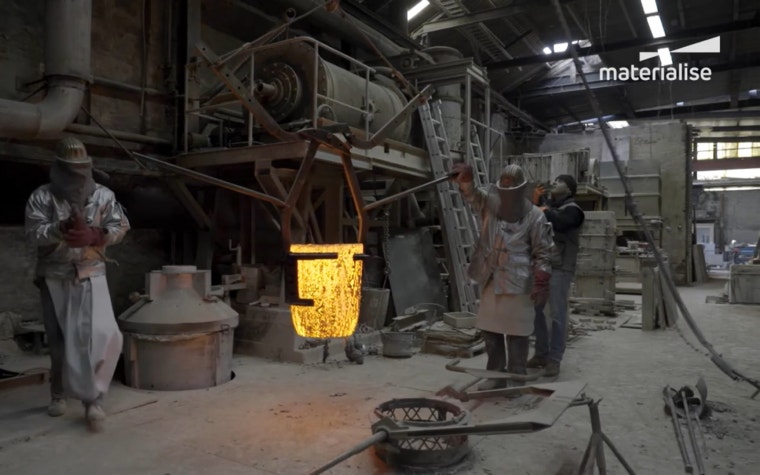

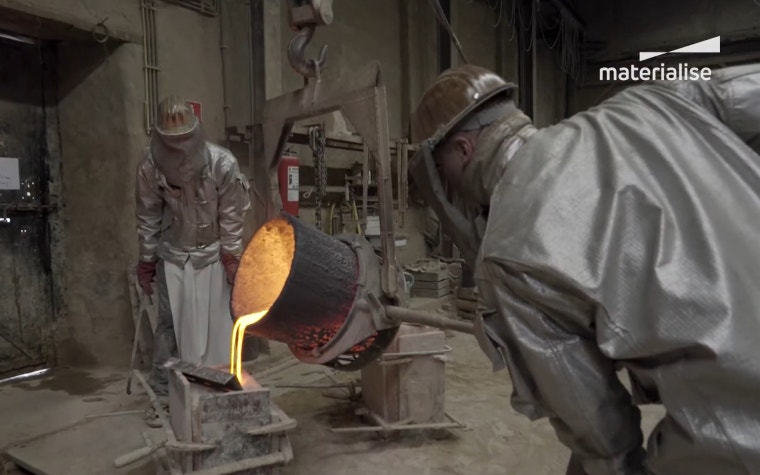

Lutz and Stian were also happy with the final result. Exhausted after a long day’s work of installing the bronze tree in the middle of an Oslo winter, Lutz told us:
“Materialise has always been very open, very direct and very curious about our project and that really helped us to realize it in the end. For us the most important part is really to surprise ourselves, to develop something that we feel hasn’t been there yet.”
Partageons :
Vous aimerez peut-être aussi
Ne ratez jamais une histoire comme celle-ci. Recevez-les dans votre boîte de réception une fois par mois.
